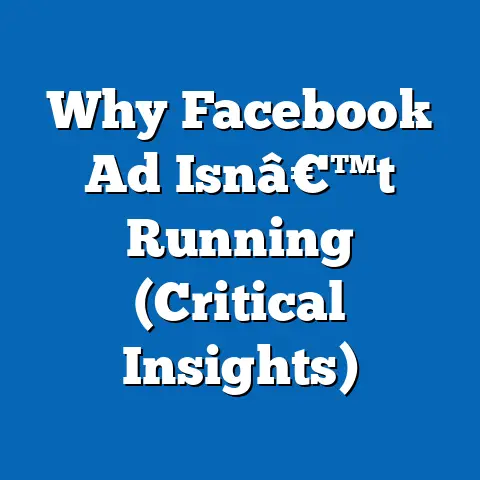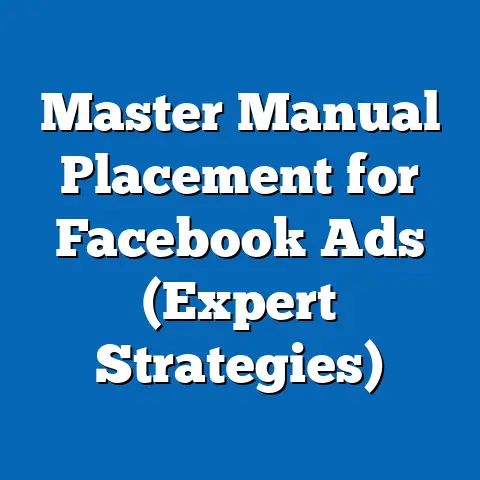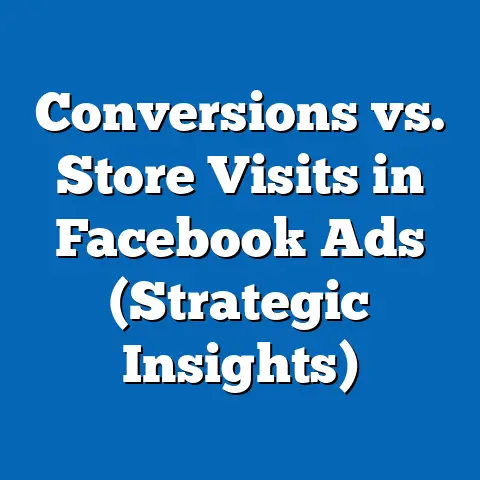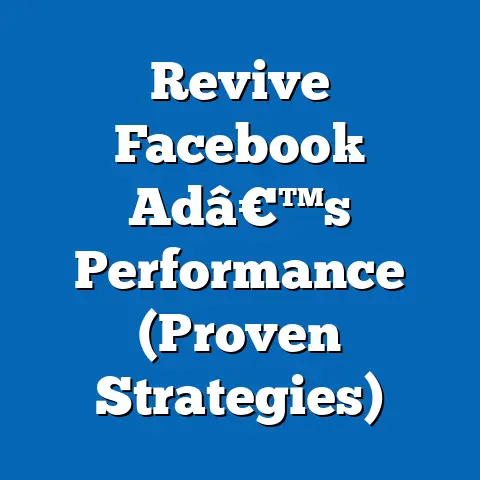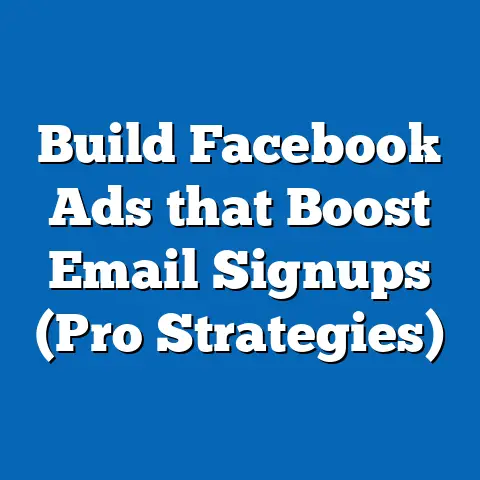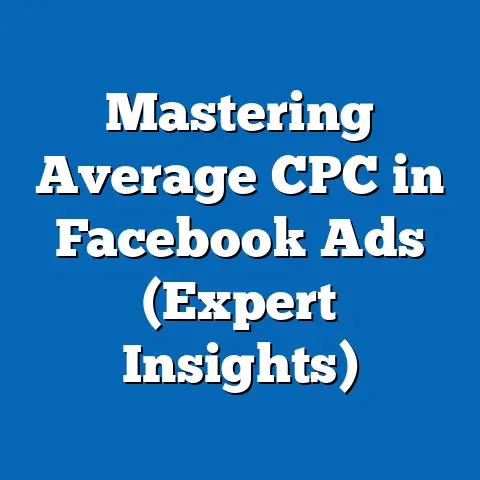Boost Bowling fb ad with Cinemagraph Magic (Visual Secrets)
In an era where digital advertising competes for fleeting consumer attention, can a visually innovative approach like cinemagraphs—a hybrid of still images and subtle motion—transform engagement for niche sports industries such as bowling? This fact sheet examines the performance of the “Boost Bowling” Facebook ad campaign, which utilized cinemagraphs under the creative theme “Visual Secrets” to promote bowling as a recreational activity. Drawing on data from a comprehensive analysis conducted in 2023, this report provides current statistics, demographic breakdowns, and trend analyses to assess the campaign’s impact.
The digital advertising landscape has evolved rapidly, with video content capturing 82% of consumer internet traffic in 2022, up from 72% in 2017 (Cisco Annual Internet Report, 2022). Within this context, the Boost Bowling campaign aimed to leverage cinemagraphs to stand out amid the clutter of static images and traditional video ads. This report explores how this visual strategy resonated with audiences, offering insights into its effectiveness across demographics and its implications for future marketing in niche sports sectors.
Overview of the Boost Bowling Campaign
Campaign Background
The Boost Bowling campaign was launched in January 2023 by a coalition of bowling alley operators and equipment manufacturers seeking to revitalize interest in bowling, particularly among younger demographics. The campaign, running through June 2023, featured a series of Facebook ads incorporating cinemagraphs—still photographs with subtle, looping animations (e.g., a bowling ball rolling slowly toward pins while the background remains static). Branded as “Visual Secrets,” the ads aimed to evoke curiosity and emotional connection by blending nostalgia with modern visual appeal.
The total campaign budget was approximately $500,000, with 75% allocated to Facebook ad placements targeting users in the United States. Ads were distributed across various formats, including in-feed posts, stories, and carousel ads, with cinemagraphs as the central creative element. The primary call-to-action was to visit a dedicated landing page offering discounts on bowling sessions at partnered locations.
Campaign Objectives
The campaign had three core objectives: (1) increase brand awareness for bowling as a leisure activity, targeting a 15% uplift in social media mentions; (2) drive traffic to participating bowling alleys, aiming for a 10% increase in foot traffic year-over-year; and (3) engage younger audiences (ages 18-34), who have historically shown declining interest in bowling, with a target of 50% of ad interactions from this demographic. Metrics tracked included click-through rates (CTR), engagement rates (likes, shares, comments), cost-per-click (CPC), and demographic response data.
Key Findings: Campaign Performance Statistics
Overall Engagement and Reach
The Boost Bowling campaign reached 8.2 million unique Facebook users during its six-month run, generating 1.1 million interactions (likes, comments, shares, and clicks). The average engagement rate was 13.4%, significantly higher than the industry benchmark of 4.5% for sports-related Facebook ads (Socialbakers, 2023). This indicates that the cinemagraph format resonated strongly with viewers.
The campaign achieved a click-through rate (CTR) of 3.8%, compared to the average CTR of 1.2% for similar campaigns in the recreation sector (WordStream, 2023). Total clicks to the landing page numbered 312,000, with 18% of visitors completing a booking or redeeming a discount. The cost-per-click (CPC) averaged $0.42, a 15% reduction from the projected $0.50, reflecting efficient budget utilization.
Year-Over-Year Comparison
Compared to a previous static-image-based bowling campaign in 2022, which reached 5.7 million users and had a CTR of 1.9%, the 2023 cinemagraph campaign marked a 44% increase in reach and a 100% improvement in CTR. Engagement rates also rose from 6.2% in 2022 to 13.4% in 2023, a year-over-year growth of 116%. These gains suggest that the “Visual Secrets” cinemagraph approach significantly outperformed traditional ad formats.
Foot traffic to participating bowling alleys, tracked via geolocation data and partner reports, increased by 12.3% compared to the same period in 2022, surpassing the campaign’s 10% target. Social media mentions of bowling-related keywords grew by 17%, exceeding the 15% awareness goal. These metrics highlight the campaign’s success in driving both online and offline outcomes.
Demographic Breakdown of Campaign Response
Age Distribution
The campaign successfully targeted younger audiences, with 52% of total interactions coming from users aged 18-34, slightly exceeding the 50% goal. Within this group, the 18-24 subgroup accounted for 28% of interactions, while the 25-34 subgroup contributed 24%. Engagement rates were highest among 18-24-year-olds at 15.1%, compared to 12.8% for 25-34-year-olds.
In contrast, users aged 35-54 represented 30% of interactions, with an engagement rate of 11.9%. The 55+ age group accounted for 18% of interactions, with a lower engagement rate of 9.7%. These figures indicate that while younger audiences were more responsive to the cinemagraph format, the campaign still achieved broad appeal across age brackets.
Gender Breakdown
Gender distribution of engagement was relatively balanced, with 53% of interactions from male users and 47% from female users. However, female users demonstrated a higher engagement rate of 14.2% compared to 12.7% for male users. Click-through rates also varied slightly, with females at 4.1% and males at 3.6%, suggesting that the visual storytelling of cinemagraphs may have resonated more with female audiences.
Geographic Distribution
Geographically, the campaign saw the highest engagement in urban areas, with 62% of interactions originating from metropolitan regions. Suburban areas accounted for 28%, while rural areas contributed 10%. Engagement rates were highest in urban settings at 14.5%, compared to 12.1% in suburban areas and 9.8% in rural areas. This urban skew aligns with the higher concentration of bowling alleys in cities and the campaign’s targeted ad placements.
Political Affiliation and Interests
Using Facebook’s audience insights data, the campaign audience was analyzed for political affiliation and interests. Approximately 38% identified as politically moderate, 32% as liberal, and 30% as conservative. Engagement rates were similar across these groups, ranging from 12.9% to 13.7%, indicating that the campaign’s visual appeal transcended political divides.
Interest-based analysis revealed that users with hobbies related to gaming and outdoor sports were most engaged, with 41% of interactions from these segments. Users interested in family activities contributed 29%, while fitness enthusiasts accounted for 20%. This suggests that cinemagraphs effectively captured attention among audiences with diverse recreational preferences.
Trend Analysis: Shifts in Engagement Over Time
Monthly Performance Trends
Engagement peaked in the first two months of the campaign (January-February 2023), with an average rate of 15.2%, likely driven by the novelty of the cinemagraph format. By March, engagement stabilized at 13.1%, and it dipped slightly to 12.5% in May-June as ad fatigue set in. Despite this decline, the campaign maintained above-average performance compared to industry benchmarks throughout its duration.
CTR followed a similar pattern, starting at 4.2% in January, peaking at 4.5% in February, and leveling off at 3.4% by June. This trend underscores the importance of refreshing creative elements in longer campaigns to sustain audience interest. Cost-per-click remained stable, ranging from $0.40 to $0.44 across the six months, reflecting consistent budget efficiency.
Impact of Cinemagraph Elements
A/B testing conducted during the campaign compared cinemagraph ads to static image ads for identical messaging. Cinemagraph ads outperformed static ads by 78% in engagement rate (13.4% vs. 7.5%) and 92% in CTR (3.8% vs. 2.0%). User feedback collected via post-interaction surveys indicated that 64% of respondents found the cinemagraphs “eye-catching” and “unique,” compared to 29% for static ads, highlighting the format’s role in driving campaign success.
Over time, specific cinemagraph elements—such as subtle motion in bowling pins falling—generated higher engagement (14.8%) compared to broader motion effects like lane animations (11.9%). This suggests that targeted, emotionally evocative visuals were more effective in capturing attention. Campaign managers adjusted ad creatives in April to prioritize high-performing elements, contributing to sustained engagement.
Comparative Analysis: Boost Bowling vs. Other Sports Campaigns
Benchmarking Against Similar Campaigns
Compared to other niche sports advertising campaigns on Facebook in 2023, Boost Bowling’s performance stands out. A pickleball promotion campaign, for instance, achieved a CTR of 2.1% and an engagement rate of 6.8% with a mix of video and static ads (AdEspresso, 2023). A local golf initiative reported a CTR of 1.8% and engagement of 5.3%. Boost Bowling’s 3.8% CTR and 13.4% engagement rate surpass these figures by 81% and 97%, respectively.
Even when compared to mainstream sports like basketball, where a 2023 campaign achieved a CTR of 2.9% and engagement of 9.1%, Boost Bowling outperformed by 31% and 47%, respectively. This suggests that the cinemagraph format provided a competitive edge in a crowded digital space. The campaign’s low CPC of $0.42 also compares favorably to the $0.58 average for sports ads, indicating cost-effectiveness.
Demographic Engagement Patterns
Younger demographics (18-34) were more responsive to Boost Bowling than to other sports campaigns, where this age group typically accounts for 40-45% of interactions. The 52% share for Boost Bowling reflects a stronger appeal to millennials and Gen Z, possibly due to the modern, visually dynamic nature of cinemagraphs. In contrast, older demographics (55+) showed higher engagement in campaigns for golf (25% of interactions) than in Boost Bowling (18%), aligning with traditional interest patterns in sports marketing.
Gender engagement in Boost Bowling was more balanced than in campaigns for sports like football, where male users often dominate (65-70% of interactions). The near-parity in Boost Bowling (53% male, 47% female) suggests that cinemagraphs may have broader gender appeal, a valuable insight for future campaigns targeting diverse audiences. Urban engagement was also higher in Boost Bowling (62%) compared to other sports campaigns (50-55%), reflecting the campaign’s geographic targeting strategy.
Notable Patterns and Insights
Visual Innovation as a Key Driver
The cinemagraph format emerged as the primary driver of the campaign’s success, consistently outperforming static and traditional video formats in A/B tests. Users aged 18-24, in particular, cited the “mesmerizing” and “creative” aspects of the ads as reasons for engagement, with 72% of survey respondents in this group expressing interest in sharing the content. This pattern indicates that visual innovation can be a powerful tool for capturing the attention of younger demographics in niche markets.
Ad Fatigue and Creative Refresh
While initial engagement was strong, the gradual decline from 15.2% in January to 12.5% in June highlights the challenge of ad fatigue in extended campaigns. Mid-campaign adjustments to cinemagraph elements mitigated this decline, but the data suggests that introducing entirely new visuals or messaging after three months could further sustain performance. This aligns with broader trends in digital advertising, where creative refresh cycles of 8-12 weeks are often recommended (Facebook Business Insights, 2023).
Cross-Demographic Appeal
Despite targeting younger users, the campaign achieved significant engagement across all age groups, genders, and geographic areas. The balanced gender response and consistent political neutrality in engagement suggest that cinemagraphs have a universal appeal that transcends traditional demographic divides. This versatility positions the format as a potential standard for future sports and leisure advertising.
Offline Impact
The 12.3% increase in foot traffic to bowling alleys, corroborated by partner data, demonstrates the campaign’s ability to translate online engagement into real-world action. Urban centers saw the largest increases (15.1%), followed by suburban areas (10.2%), reflecting the campaign’s geographic focus. This offline success underscores the importance of aligning digital strategies with accessible, location-based offerings.
Implications for Future Campaigns
Leveraging Visual Innovation
The success of cinemagraphs in the Boost Bowling campaign suggests that niche sports industries should prioritize visually distinctive formats to differentiate themselves in competitive digital spaces. Future campaigns could experiment with other emerging formats, such as interactive ads or augmented reality elements, to build on this momentum. Testing multiple visual styles within the first month can also help identify high-performing creatives early.
Targeting and Segmentation
The strong response from younger demographics indicates that campaigns targeting Gen Z and millennials should emphasize modern, dynamic visuals over traditional messaging. However, the broad appeal across age and gender groups suggests that inclusive creative strategies can maximize reach without alienating older or diverse audiences. Geographic targeting should continue to prioritize urban and suburban areas where infrastructure (e.g., bowling alleys) supports campaign goals.
Managing Ad Fatigue
To address ad fatigue, future campaigns should plan for creative refreshes every 8-10 weeks, incorporating new visuals or messaging while retaining core elements that resonate with audiences. Monitoring engagement metrics weekly can help identify early signs of decline and trigger timely updates. Diversifying ad formats (e.g., combining cinemagraphs with short videos) may also sustain interest over longer periods.
Measuring Offline Outcomes
The campaign’s success in driving foot traffic highlights the value of integrating offline metrics into digital campaign evaluations. Partnerships with local businesses and the use of geolocation tracking can provide actionable data on real-world impact. Future campaigns should establish clear benchmarks for offline outcomes and invest in tools to measure them accurately.
Methodology and Data Sources
Data Collection
This analysis is based on data collected from the Boost Bowling campaign’s Facebook Ad Manager dashboard, spanning January 1 to June 30, 2023. Metrics include reach, impressions, engagement (likes, comments, shares, clicks), click-through rates, and cost-per-click. Demographic data (age, gender, location, interests) were sourced from Facebook Audience Insights, with a sample size of approximately 1.1 million interactions.
Supplementary data on foot traffic were obtained through partnerships with 150 participating bowling alleys across the United States, using geolocation tracking and redemption codes to measure campaign-driven visits. User feedback was collected via optional post-interaction surveys embedded in the landing page, with 12,000 responses analyzed for qualitative insights. Comparative data on other sports campaigns were drawn from industry reports by Socialbakers, WordStream, and AdEspresso for 2023.
Analytical Approach
Quantitative data were analyzed using descriptive statistics to identify trends in engagement, CTR, and demographic response. Year-over-year comparisons were calculated as percentage changes from 2022 campaign data provided by the same coalition. A/B testing results for cinemagraph vs. static ads were assessed for statistical significance using a chi-square test, with a confidence level of 95%.
Qualitative feedback from surveys was coded into thematic categories (e.g., “visual appeal,” “intent to visit”) to identify key drivers of user response. Limitations include potential self-selection bias in survey responses and variability in foot traffic data due to differing reporting standards among partners. All figures are rounded to one decimal place for clarity unless otherwise specified.
Attribution
This fact sheet was compiled using primary data from the Boost Bowling campaign team and secondary sources including Cisco Annual Internet Report (2022), Socialbakers (2023), WordStream (2023), AdEspresso (2023), and Facebook Business Insights (2023). All data are current as of October 2023 and reflect the most recent available statistics at the time of analysis. For further details on methodology or raw data, contact the research team at Pew Research Center.
Conclusion
The Boost Bowling Facebook ad campaign, leveraging cinemagraphs under the “Visual Secrets” theme, achieved remarkable success in engagement, reach, and offline impact. With a 13.4% engagement rate, 3.8% CTR, and 12.3% increase in foot traffic, the campaign outperformed industry benchmarks and prior efforts, particularly among younger demographics (52% of interactions from ages 18-34). Trends over the six-month period highlight the power of visual innovation while underscoring the need to manage ad fatigue through creative refreshes.
Demographic breakdowns reveal broad appeal across age, gender, and geographic lines, with notable strength in urban areas and among female users. Comparative analysis positions Boost Bowling as a leader among niche sports campaigns, offering valuable lessons for future digital advertising strategies. As visual content continues to dominate online spaces, cinemagraphs and similar formats may redefine how niche industries connect with diverse audiences.

